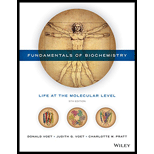
Concept explainers
To write: An analogous equation for the light reactions of photosynthesis.
Concept introduction: Photosynthesis includes two reactions: light-dependent and light-independent reaction. Light reactions are those that are dependent on the incident light energy on the chloroplast.
Explanation of Solution
In plants, the light reactions use light energy to produce adenosine triphosphate (ATP) and nicotinamide adenine dinucleotide phosphate (NADPH) inside the thylakoids of chloroplasts using the two photosystems and the electron carriers.
Light reactions include two substeps. One reaction is the photolysis of water, where the light energy is used up to break the water molecules to produce oxygen molecule and protons. The second reaction is where these protons and the energy released during photolysis of water are used up to excite the electrons in the chlorophyll.
The analogous equation for the light reactions of photosynthesis can be depicted as follows:
In light-dependent reactions, hydrogen ions and electrons from the water molecules are loaded onto NADP+; hence, NADPH forms. Energy is released by the electrons as they move through the electron transfer chain that is used to actively transport the hydrogen ions (H+) from the stroma into the thylakoid membrane through the transmembrane enzyme known as ATP synthase. These enzymes utilize the passage of H+ ions to catalyze the ATP synthesis from ADP through the process of photophosphorylation. Oxygen (O2) is released as a waste product. Then, these products are sent to the stroma of the chloroplast where Calvin’s cycle begins, and these products are used to fix carbon dioxide with ribulose 1, 5-bisphosphate.
Want to see more full solutions like this?
Chapter 19 Solutions
Fundamentals of Biochemistry: Life at the Molecular Level
 BiochemistryBiochemistryISBN:9781319114671Author:Lubert Stryer, Jeremy M. Berg, John L. Tymoczko, Gregory J. Gatto Jr.Publisher:W. H. Freeman
BiochemistryBiochemistryISBN:9781319114671Author:Lubert Stryer, Jeremy M. Berg, John L. Tymoczko, Gregory J. Gatto Jr.Publisher:W. H. Freeman Lehninger Principles of BiochemistryBiochemistryISBN:9781464126116Author:David L. Nelson, Michael M. CoxPublisher:W. H. Freeman
Lehninger Principles of BiochemistryBiochemistryISBN:9781464126116Author:David L. Nelson, Michael M. CoxPublisher:W. H. Freeman Fundamentals of Biochemistry: Life at the Molecul...BiochemistryISBN:9781118918401Author:Donald Voet, Judith G. Voet, Charlotte W. PrattPublisher:WILEY
Fundamentals of Biochemistry: Life at the Molecul...BiochemistryISBN:9781118918401Author:Donald Voet, Judith G. Voet, Charlotte W. PrattPublisher:WILEY BiochemistryBiochemistryISBN:9781305961135Author:Mary K. Campbell, Shawn O. Farrell, Owen M. McDougalPublisher:Cengage Learning
BiochemistryBiochemistryISBN:9781305961135Author:Mary K. Campbell, Shawn O. Farrell, Owen M. McDougalPublisher:Cengage Learning BiochemistryBiochemistryISBN:9781305577206Author:Reginald H. Garrett, Charles M. GrishamPublisher:Cengage Learning
BiochemistryBiochemistryISBN:9781305577206Author:Reginald H. Garrett, Charles M. GrishamPublisher:Cengage Learning Fundamentals of General, Organic, and Biological ...BiochemistryISBN:9780134015187Author:John E. McMurry, David S. Ballantine, Carl A. Hoeger, Virginia E. PetersonPublisher:PEARSON
Fundamentals of General, Organic, and Biological ...BiochemistryISBN:9780134015187Author:John E. McMurry, David S. Ballantine, Carl A. Hoeger, Virginia E. PetersonPublisher:PEARSON





